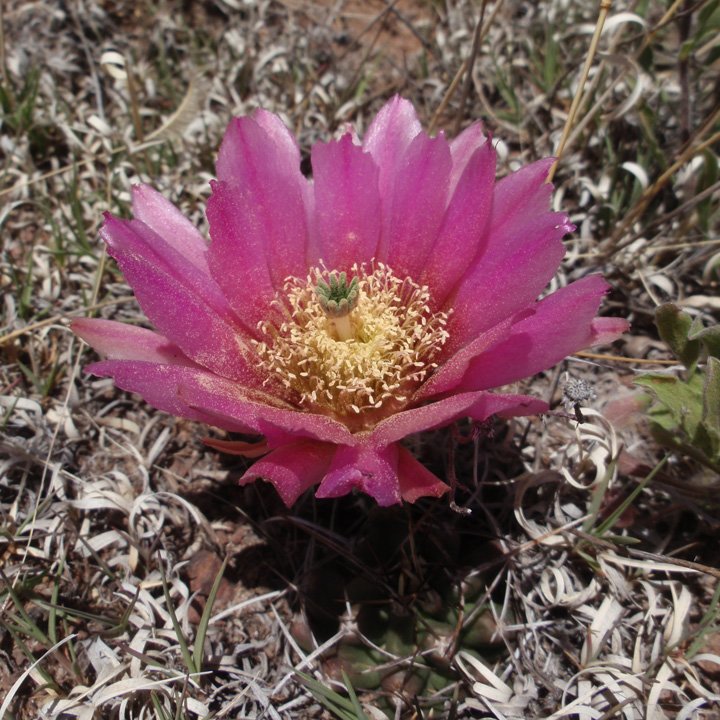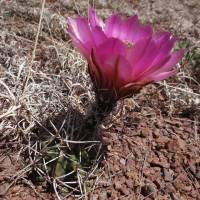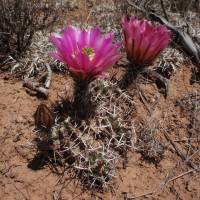Common Name: pinkflower hedgehog cactus
Duration: Perennial
Protected Status: Salvage restriced status in Arizona.
General: Often solitary or few stems in loose clumps of 1-5 with stems erect to slightly decumbent and flabby and ovoid to cylindric in age, 7.5-17 cm tall by 4-7.5 cm wide bearing 8-11 ribs with the crests uninterrupted or undulate, the areoles 15-17 mm apart. The larger stems green with the spines not obliterating stem surface, a central spine at first very dark but in age changing to gray or pale gray tipped with brown or black.
Spines: Usually 4-12 per areole, these straight or curved with radial spines spreading that are white with dark stripe on underside, often with spines of different colors, the radial spines 4-10 per areole, around 1 cm long with usually 1 central spine per areole that is extended or ascending, 2.5-4 cm long with a lower central spine like others in color or darker but flat to sharply angled.
Flowers: Flowers darker to purplish maroon with magenta inner tepals, the flowers 5-11 cm diameter and high with a flower tube 10-15 mm by 10-30 mm, flower tips thin and delicate, anthers yellow.
Fruits: Fruit fleshy and green turning to bright red to dull carmine or purplish maroon, often orangish, 20-30 mm, pulp magenta or red.
Ecology: Found in sandy or gravelly soils in grasslands or woodlands from 6,000-8,000 ft (914-2438 m), flowers April-June, fruiting June.
Notes: Look for central spine curving upward its entire length to separate this variety from E. fendleri. The spines often appear to blend into the outline of the stem, especially at the apex.
Ethnobotany: No specific use of the species or variety is recorded, however the fruits of the genus were used as food.
Etymology: Echinocereus is from the Greek echinos, hedgehog or spine and cereus, waxy, while fendleri is named for Augustus Fendler (1813-1883) a German botanical collector in North and Central America.
Synonyms: Echinocereus fendleri var. kuenzleri
Editor: LCrumbacher, 2010









